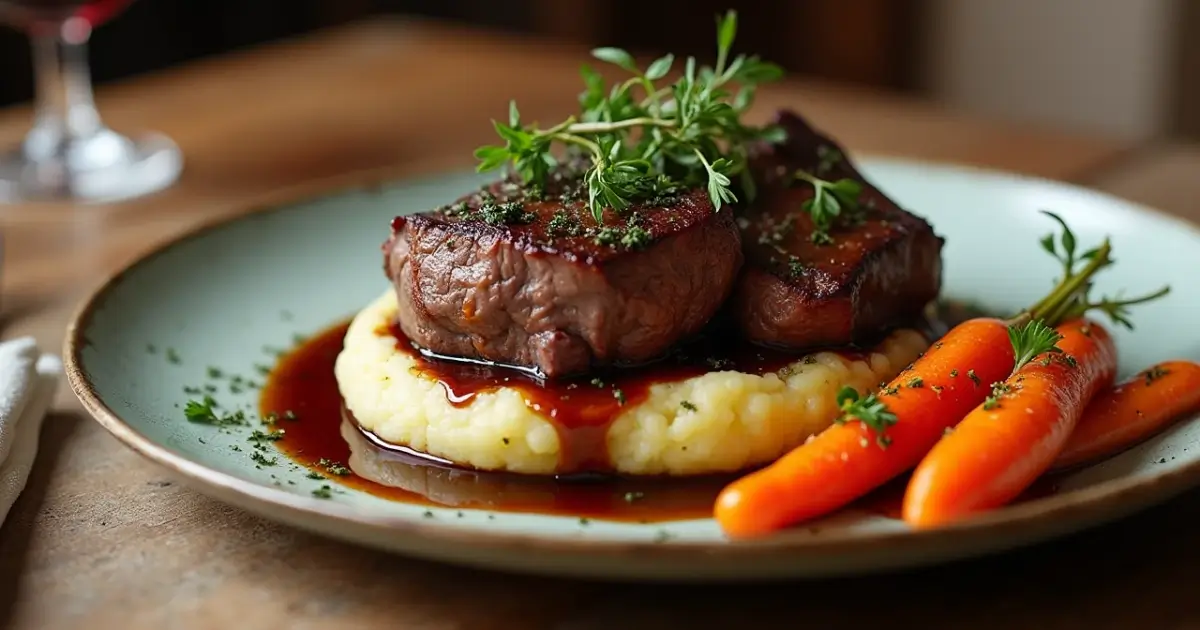Have you ever wondered what makes beef cheek meat such a beloved cut among chefs and food enthusiasts? This underrated gem, often overlooked, is a treasure trove of rich, melt-in-your-mouth flavor and collagen-rich tenderness. Whether you’re planning a cozy family dinner or a gourmet feast, beef cheek is your secret weapon for creating unforgettable meals.
In this recipe, we’ll show you how to transform this humble cut into a show-stopping dish that’s both easy to prepare and incredibly satisfying. From slow-braising techniques to pro tips for maximizing flavor, you’ll discover why beef cheek is a favorite for comfort food lovers and adventurous cooks alike. Ready to elevate your cooking game? Let’s dive in!
Why You’ll Love beef cheek meat
If you’re looking for a dish that’s equal parts impressive and approachable, beef cheek is your answer. This recipe is a game-changer for anyone who loves rich, hearty meals that feel like a warm hug on a plate. Here’s why you’ll fall in love with it:

- Unbeatable Flavor: Beef cheek is packed with deep, savory notes that develop beautifully during slow cooking. The result? A dish that’s bursting with complexity and comfort.
- Melt-in-Your-Mouth Texture: Thanks to its high collagen content, beef cheek becomes incredibly tender when cooked low and slow, practically falling apart with each bite.
- Versatility at Its Best: Whether you’re hosting a dinner party or meal prepping for the week, this recipe adapts effortlessly to any occasion.
- Budget-Friendly Gourmet: Often more affordable than premium cuts, beef cheek lets you create restaurant-quality meals without breaking the bank.
But what truly sets this recipe apart is how simple it is to master. With a few key ingredients and some patience, you’ll unlock a world of flavor that’s sure to impress. Ready to get started? Let’s dive into the ingredients and techniques that make this dish a standout.
Ingredients of beef cheek meat
Gathering the right ingredients is the first step to creating a beef cheek dish that’s rich, flavorful, and unforgettable. Here’s everything you’ll need to bring this recipe to life:.
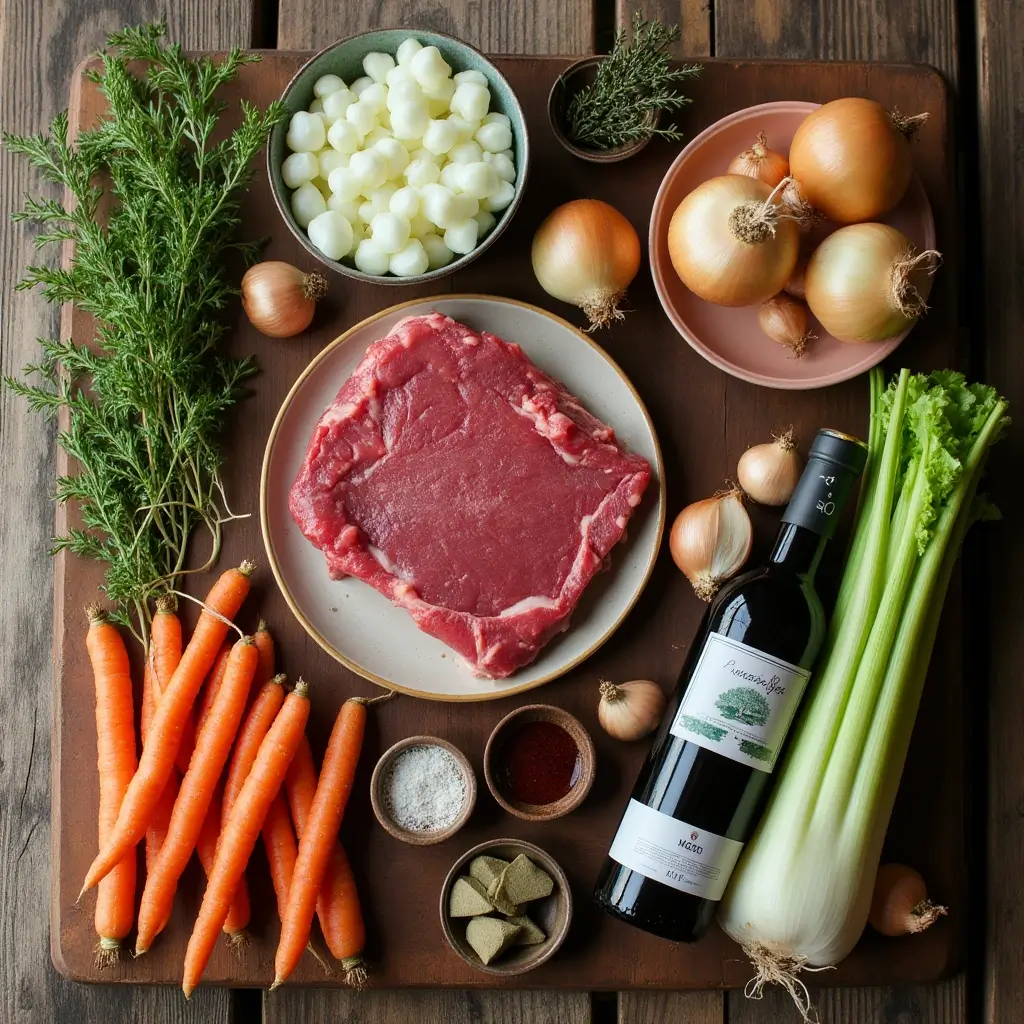
- Beef Cheek (1.5–2 lbs): The star of the show! Look for well-trimmed, fresh beef cheek at your local butcher or specialty meat shop.
- Olive Oil (2 tbsp): For searing the meat and building a flavorful base.
- Onion (1 large, chopped): Adds sweetness and depth to the dish.
- Garlic (4 cloves, minced): A must for that aromatic punch.
- Carrots (2 medium, chopped): Brings a touch of natural sweetness and color.
- Celery (2 stalks, chopped): Adds earthy notes to balance the richness.
- Tomato Paste (2 tbsp): Intensifies the savory flavor and creates a luscious sauce.
- Red Wine (1 cup): Choose a dry red wine like Cabernet Sauvignon or Merlot for a robust, complex sauce.
- Beef Stock (2 cups): The foundation of your braising liquid, ensuring the meat stays moist and flavorful.
- Bay Leaves (2): Infuses the dish with a subtle, herbal aroma.
- Fresh Thyme (3–4 sprigs): Adds a fragrant, earthy note that complements the beef beautifully.
- Salt and Black Pepper (to taste): Essential for seasoning and enhancing all the flavors.
Pro Tip: If you’re short on time or ingredients, feel free to swap red wine for extra beef stock or use dried herbs instead of fresh. The dish will still turn out delicious!
With these simple, high-quality ingredients, you’re well on your way to creating a beef cheek masterpiece. Next up, we’ll walk through the step-by-step instructions to ensure your dish turns out perfectly.
Instructions of beef cheek meat
Cooking beef cheek is easier than you might think, and the results are absolutely worth it. Follow these straightforward steps to create a dish that’s tender, flavorful, and sure to impress. Let’s dive in!
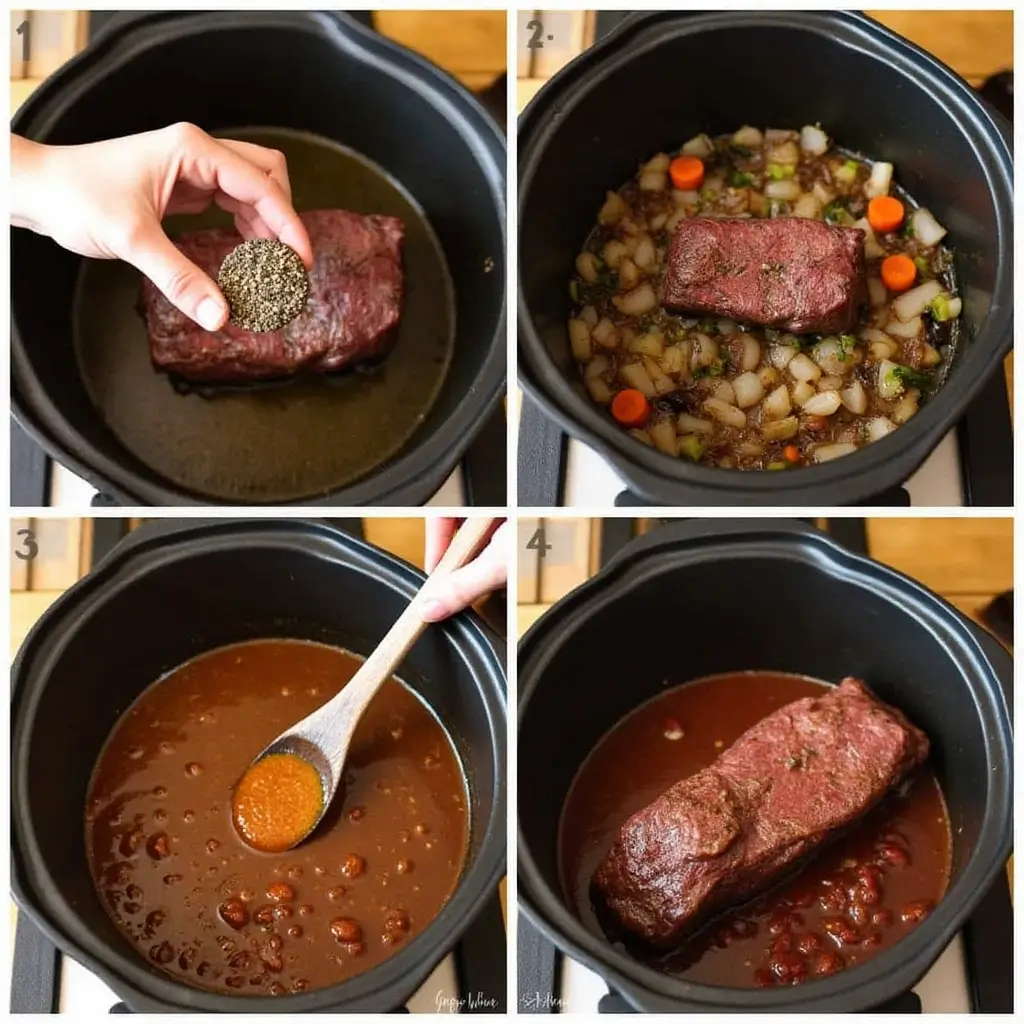
1: Prep the Beef Cheek meat
- Use paper towels to pat the beef cheek dry. This helps it sear beautifully.
- Season both sides generously with salt and black pepper.
2: Sear for Flavor
- Heat olive oil in a large, heavy-bottomed pot or Dutch oven over medium-high heat.
- Place the beef cheek in the pot and sear for 3–4 minutes on each side until it develops a rich, golden-brown crust. This step is key for building deep flavor.
- Once seared, remove the beef cheek and set it aside on a plate.
3: Sauté the Veggies
- In the same pot, add the chopped onion, garlic, carrots, and celery. Cook for 5–7 minutes until softened and fragrant.
- Stir in the tomato paste and cook for another 2 minutes to deepen the savory notes.
4: Build the Sauce
- Pour in the red wine, using a wooden spoon to scrape up any browned bits stuck to the bottom of the pot. These bits are flavor gold!
- Let the wine simmer for 3–4 minutes to reduce slightly and concentrate the taste.
- Add the beef stock, bay leaves, and fresh thyme, stirring to combine everything into a rich, aromatic braising liquid.
5: Braise to Perfection
- Return the seared beef cheek to the pot, ensuring it’s mostly submerged in the liquid.
- Bring the mixture to a gentle simmer, then cover the pot and reduce the heat to low.
- Let it cook for 2.5–3 hours, or until the beef cheek is fork-tender and falls apart easily.
6: Rest and Final Touches
- Once the beef cheek is cooked, carefully remove it from the pot and let it rest for 10 minutes.
- While it rests, skim off any excess fat from the sauce and adjust the seasoning with salt and pepper if needed.
Handy Tip: If you’re short on time, a pressure cooker or Instant Pot can reduce the cooking time to about 1 hour. Just follow the manufacturer’s instructions for braising.
With these simple steps, you’ll have a dish that’s rich, tender, and packed with flavor. Up next, we’ll share some pro tips and creative variations to help you make this recipe your own!
Pro Tips and Variations
Now that you’ve mastered the basics of cooking beef cheek, let’s take it up a notch with some pro tips and creative variations. These ideas will help you customize the recipe to suit your taste and make the process even more enjoyable.
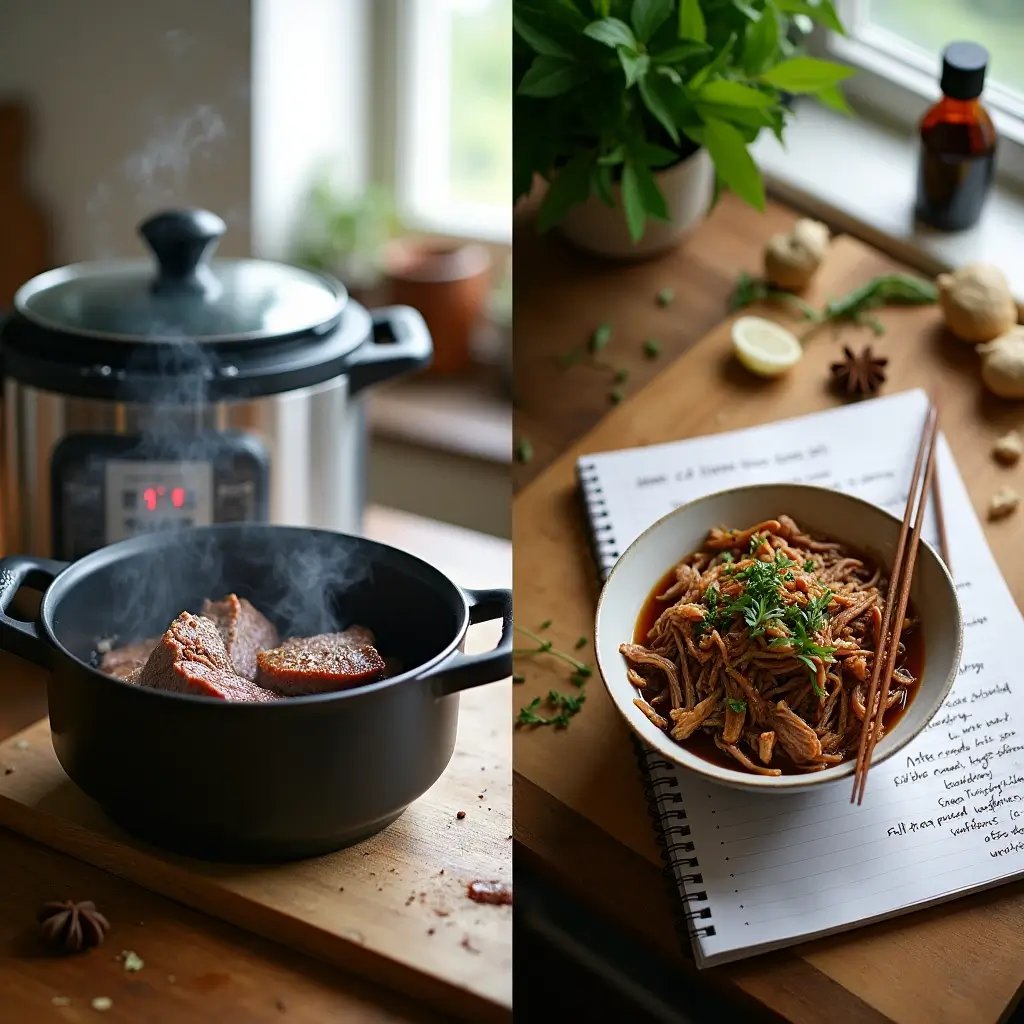
Pro Tips for Perfect Beef Cheek meat
- Trim Excess Fat: While beef cheek has a delicious marbling, trimming a bit of excess fat before cooking can prevent the dish from becoming overly greasy.
- Low and Slow is Key: Beef cheek thrives with slow cooking. If the meat isn’t fork-tender after 3 hours, let it cook a bit longer. Patience pays off!
- Deglaze Thoroughly: Don’t skip scraping the browned bits from the pot when adding the wine. These bits are packed with flavor and will elevate your sauce.
- Make Ahead: Beef cheek tastes even better the next day as the flavors deepen. Cook it a day in advance and reheat gently before serving.
Flavor Variations
- Spicy Kick: Add a chopped chili pepper or a pinch of red pepper flakes to the braising liquid for a touch of heat.
- Asian-Inspired Twist: Swap red wine for soy sauce and rice vinegar, and add star anise or ginger for an umami-rich, aromatic twist.
- Herb-Infused: Experiment with fresh rosemary, oregano, or sage instead of thyme for a different herbal profile.
- Smoky Depth: Stir in a teaspoon of smoked paprika or add a piece of smoked bacon to the pot for a rich, smoky flavor.
Cooking Method Alternatives
- Pressure Cooker: Short on time? Use a pressure cooker to reduce the cooking time to about 1 hour while still achieving tender results.
- Oven-Braised: Transfer the pot to a preheated oven at 300°F (150°C) after bringing it to a simmer. This ensures even, gentle heat for perfect braising.
- Slow Cooker: Sear the beef cheek and sauté the veggies on the stovetop, then transfer everything to a slow cooker and cook on low for 6–8 hours.
Ingredient Swaps
- No Red Wine?: Use extra beef stock or a splash of balsamic vinegar for a similar depth of flavor.
- Vegetarian-Friendly: While beef cheek is the star, you can adapt the braising method for hearty vegetables like mushrooms or eggplant.
- Gluten-Free: This recipe is naturally gluten-free, but always double-check your stock and wine labels if you’re avoiding gluten.
With these tips and variations, you can make this beef cheek recipe your own and adapt it to any occasion. Next, we’ll explore the best ways to serve and enjoy your masterpiece!
How to Serve beef cheek meat
Now that your beef cheek is perfectly cooked and bursting with flavor, it’s time to think about how to serve it. Presentation and pairing can take your dish from great to unforgettable. Here are some ideas to make your meal shine:
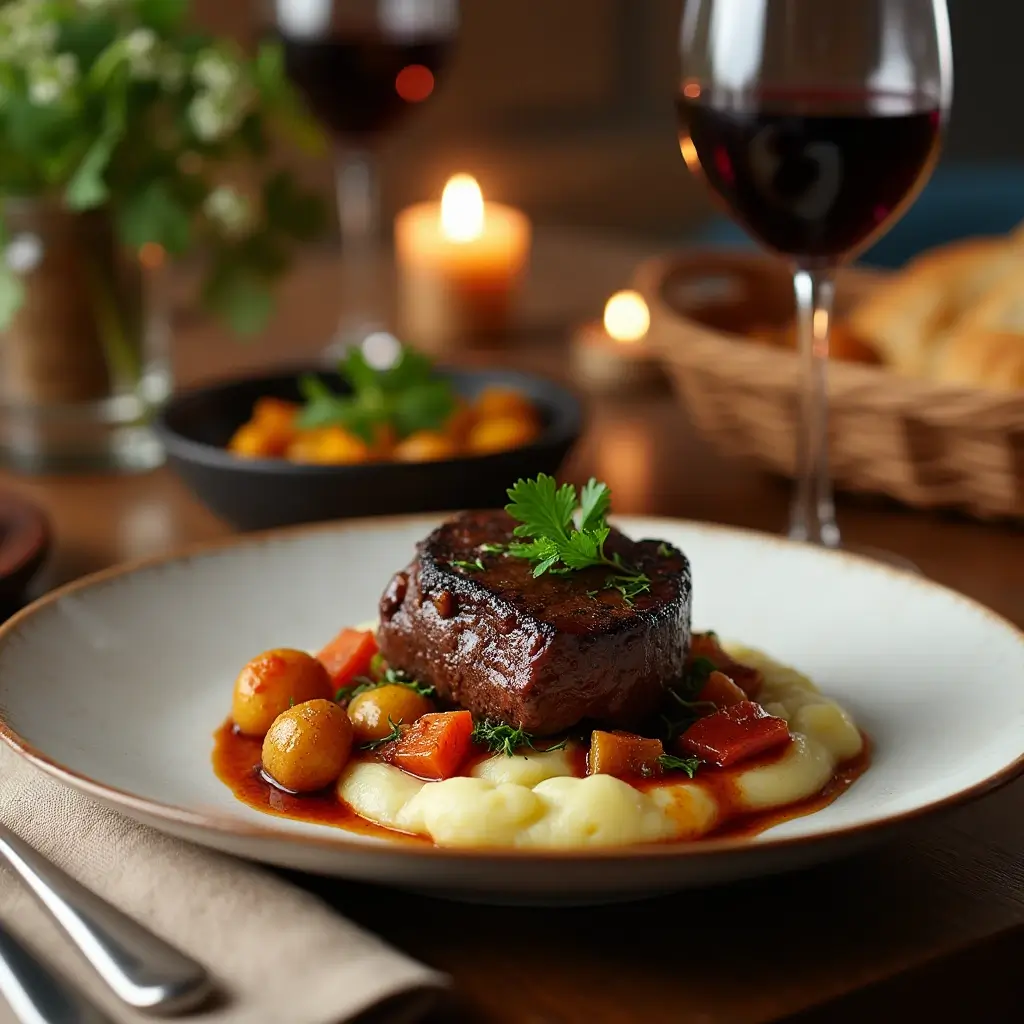
Classic Pairings for Beef Cheek meat
- Creamy Mashed Potatoes: The ultimate comfort food combo! The creamy texture of mashed potatoes pairs beautifully with the rich, tender beef cheek.
- Polenta: Soft, buttery polenta is a fantastic alternative to potatoes and soaks up the flavorful sauce like a dream.
- Crusty Bread: Serve with a side of warm, crusty bread to mop up every last bit of the delicious braising liquid.
Vegetable Sides
- Roasted Root Vegetables: Carrots, parsnips, and sweet potatoes roasted with olive oil and herbs add a sweet, caramelized contrast.
- Steamed Greens: Brighten up your plate with steamed broccoli, green beans, or sautéed spinach for a fresh, healthy touch.
- Buttered Peas: Simple yet satisfying, buttery peas add a pop of color and sweetness to balance the richness of the beef.
Garnishes and Finishing Touches
- Fresh Herbs: Sprinkle chopped parsley, chives, or thyme over the dish for a burst of freshness and color.
- Zest It Up: Add a sprinkle of lemon or orange zest to brighten the flavors and add a subtle citrus note.
- A Drizzle of Olive Oil: A high-quality olive oil drizzle just before serving adds a luxurious finish.
Serving Suggestions for Special Occasions
- Family-Style Feast: Serve the beef cheek in a large, shallow dish with the sauce poured over the top. Let everyone help themselves for a cozy, communal vibe.
- Plated Elegance: For a more formal presentation, slice the beef cheek neatly and fan it out on the plate. Spoon the sauce around the edges and add a side of your choice for a restaurant-worthy look.
- Tapas-Style: Shred the beef cheek and serve it in small bowls with crusty bread for a fun, shareable appetizer or tapas option.
Wine Pairings
- Red Wine: A full-bodied red like Cabernet Sauvignon, Malbec, or Shiraz complements the richness of the beef cheek.
- White Wine: If you prefer white, opt for a Chardonnay with buttery notes to balance the dish’s depth.
- Non-Alcoholic Option: A rich, savory broth or a sparkling water with a twist of lemon works beautifully too.
With these serving ideas, your beef cheek dish will not only taste amazing but also look stunning on the table. Next, we’ll wrap things up with some final thoughts and inspiration for your next culinary adventure!
Conclusion
Congratulations! You’ve just created a beef cheek dish that’s rich, tender, and packed with flavor. Whether you’re serving it for a special occasion or a cozy family dinner, this recipe is sure to impress. Let’s recap why this dish is a winner and how you can make it a regular part of your cooking repertoire.
Why Beef Cheek meat Recipe Works
- Affordable Gourmet: Beef cheek is a budget-friendly cut that delivers restaurant-quality results.
- Comfort Food at Its Best: The slow-cooked tenderness and rich sauce make this dish the ultimate comfort food.
- Versatile and Adaptable: From classic pairings to creative variations, this recipe can be customized to suit any taste or occasion.
Make It Your Own
Don’t be afraid to experiment! Try different herbs, spices, or cooking methods to put your own spin on this dish. Cooking is all about creativity, and beef cheek is a forgiving cut that welcomes innovation.
A Dish Worth Sharing
This recipe isn’t just about great food—it’s about creating memories. Whether you’re cooking for loved ones or treating yourself to a gourmet meal, beef cheek is a dish that brings people together.
What’s Next?
If you enjoyed this recipe, why not explore other underrated cuts like oxtail, short ribs, or brisket? Each offers its own unique flavor and texture, perfect for slow cooking and braising.
Thank you for joining me on this culinary adventure! I hope this beef cheek recipe inspires you to try new things in the kitchen and enjoy the process as much as the results. Happy cooking!
FAQs
Curious about beef cheek? You’re in the right place! Here are answers to some of the most common questions to help you understand and cook this unique cut like a pro.
Beef cheek is a cut of meat taken from the facial muscles of the cow. It’s known for its rich flavor and high collagen content, which makes it ideal for slow cooking. When prepared properly, it becomes incredibly tender and flavorful.
Yes, beef cheek is naturally tough because it comes from a heavily worked muscle. However, when cooked low and slow (like braising or slow cooking), the collagen breaks down, transforming it into a melt-in-your-mouth, tender delicacy.
While beef cheek was once considered an inexpensive cut, its popularity in gourmet cooking has driven up demand and prices. Additionally, each cow yields only a small amount of cheek meat, making it relatively scarce compared to other cuts.
Absolutely! Beef cheek is a fantastic cut for those who love rich, flavorful dishes. Its high collagen content and marbling make it perfect for slow cooking, resulting in a dish that’s both tender and deeply satisfying.
Beef cheek is generally more affordable than premium cuts like ribeye or filet mignon, but prices can vary depending on your location and demand. It’s still a great value for the quality and flavor it delivers, especially when cooked properly.
Yes, beef cheek is delicious! When slow-cooked, it becomes incredibly tender and absorbs the flavors of the braising liquid, creating a dish that’s rich, savory, and deeply satisfying.

